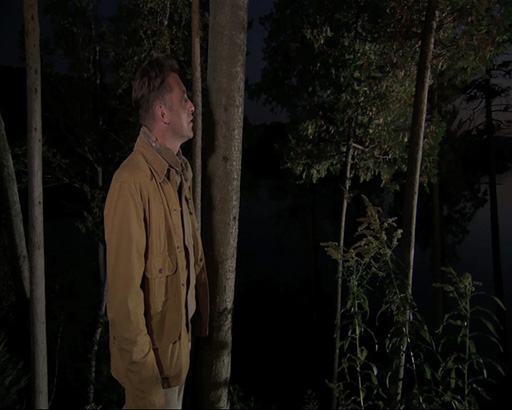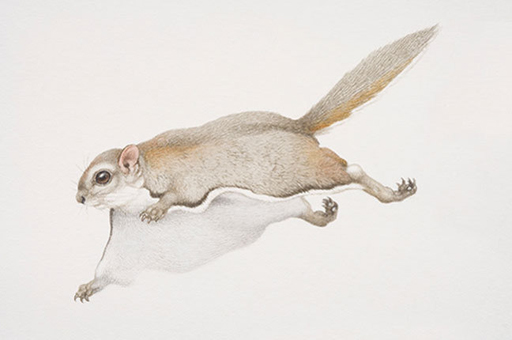4.2 Flying squirrels
Flying squirrels are not closely related to the colugos but they have features in common. You have seen squirrels and read about the colugo. As you watch the video, think about how flying squirrels steer during their glides. Note the advantages of the gliding habit.

Transcript
The similarities between colugos and flying squirrels
CHRIS PACKHAM: The best time to see them is in the first couple of hours after dark. What I'm hoping is that if I stand here and stay really quiet, I'll be in for a real treat. It's a creature I've waited all my life to see, but they move so fast.
[MUSIC PLAYING]
Oh, did you see that? That was amazing. Went right past my face. Flying squirrel.
[MUSIC PLAYING]
They really are expert gliders - they can glide for up to 200 metres.
[MUSIC PLAYING]
When I was a kid, I was obsessed with things that were not meant to fly - flying fish, flying frogs, flying lizards, flying squirrels - and this is the first time I've ever seen them. It was worth a 45-year wait, honestly.
[MUSIC PLAYING]
Ah, did you? Ah, did you see that? I felt it, it went right through my hair, seriously, centre parting. It was like having a sheet of A4 coming right at my face. And as soon as they hit the tree, they are running - and up they go.
[MUSIC PLAYING]
They're just crisscrossing all the trees. And they immediately scamper up to the top and then take off and glide again. And sometimes, I've noticed, they can even change direction during flight.
[MUSIC PLAYING] Ah, hit me in the chest. It doesn't come better than that, does it?
Activity 2
Consider these questions and note your answers in the box below.
- Identify one similarity and one difference between flying squirrels and colugos.
- On the evidence of the video sequence, comment on how flying squirrels steer during gliding.
- What are the disadvantages and consequences of the gliding habit in flying squirrels?
Answer
Both colugos and flying squirrels have a flap of skin stretched between their limbs on each side of the body – the patagium. However, in contrast to the squirrels, colugos are not as adept at moving through the trees as the patagium is much larger and an encumbrance except in flight.
During gliding squirrels steer partly with their tail and partly be altering the tension of the patagium, which alters its aerodynamic properties.
The ability to glide enables colugos and squirrels to travel long distances between trees at a low energetic cost. However, they are very vulnerable to predators and so generally only come out at night.

